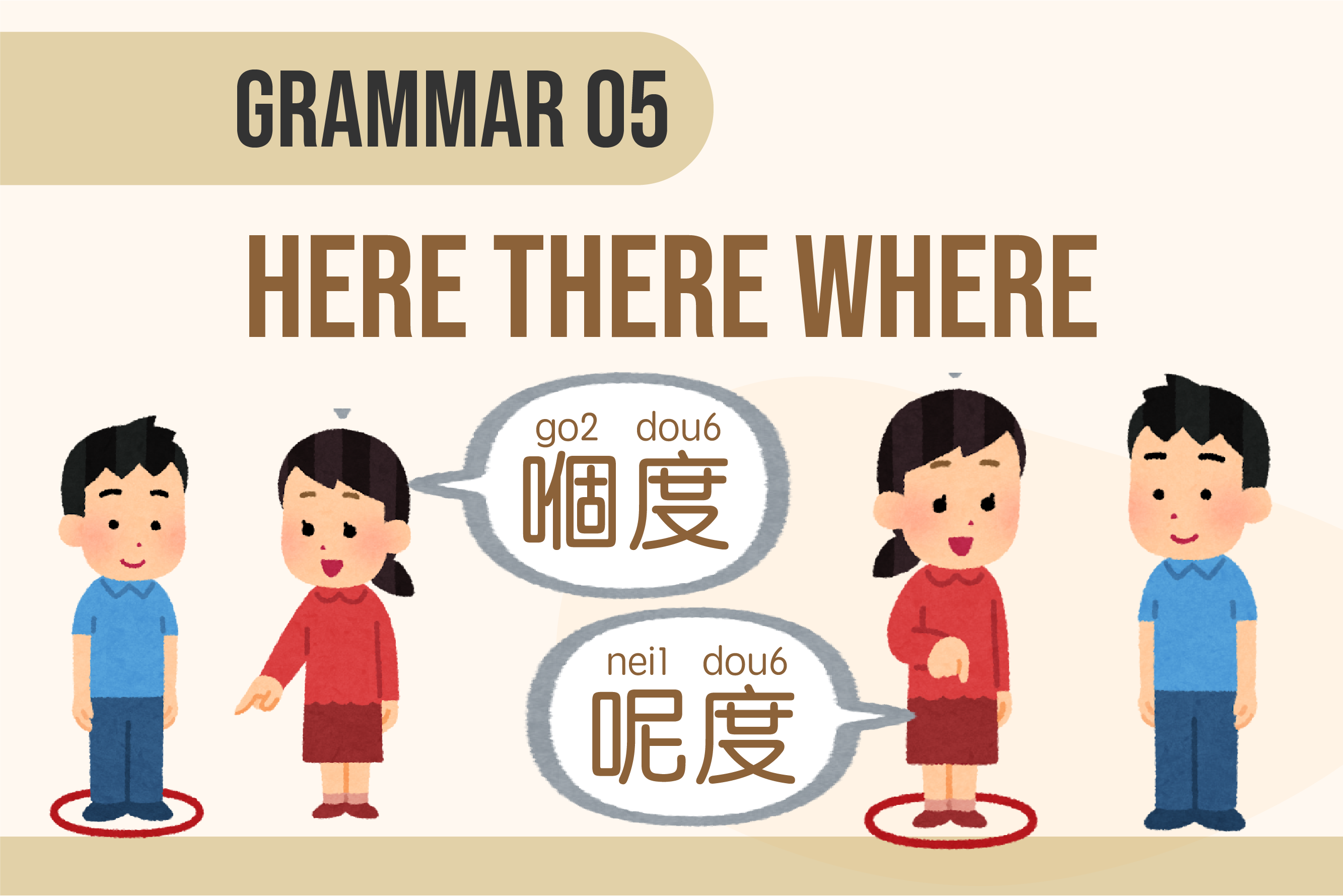Table of Content
Similar to demonstrative pronouns and determiners, which use 呢 and 嗰 to distinguish between proximal and distal, the words for "here" and "there" in Cantonese also follow this distinction.
Here, There & Where in Cantonese
呢度 | 嗰度 | 邊度 |
|---|---|---|
Here | There | Where |
呢度 (sometimes 依度) means here and 嗰度 means there. When asking about location, 邊度 , which means where, is used in Cantonese.
Their mandarin equivalent are 這裡, 那裡 and 哪裡 respectively.
While English sometimes uses "this," "these," "that," and "those" to refer to places, as in "This is my home," Cantonese typically uses 呢度 and 嗰度 instead.
Example Sentences
呢度係邊度呀?
Where is this place?
(lit. Here is where?)呢度係我屋企
This is my home.
(lit. Here is my home.)你哋喺邊度呀?
Where are you guys?
(lit. You guys at where?)我喺呢度,佢喺嗰度
I am here. He/She is there.
(lit. I at here. He/She at there.)邊度有廁所呀?
Is there a toilet?
(lit. Where has toilet?)嗰度有廁所
There is a toilet.
(lit. There has toilet.)
(Or simply 嗰度呀, which means "over there", if you are answering the question.)
Additional Notes
Related Grammar
In examples 3-6, 喺 and 有 are used to denote the existence of something or action in a certain location. We will discuss the usage of 喺 and 有 more in Cantonese Location & Existence 喺(hai2) & 有(jau5).
Colloquial Variations
Sometimes, 邊度 becomes 邊 and 呢度 becomes 度 in colloquial conversations. 你係邊度呀? can be 你係邊呀? and 我係呢度呀 can be 我係度呀.
